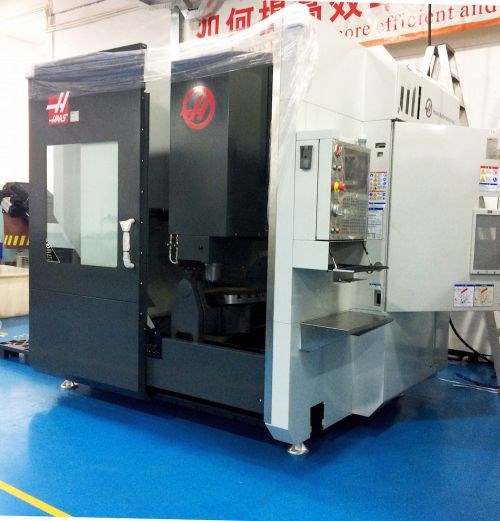Five-Axis Machining Complements Additive Manufacturing
Intricate components made through laser melting go directly to a five-axis machine as part of a service combining additive and subtractive processing.
Share


Takumi USA
Featured Content
View More







Hwacheon Machinery America, Inc.
Featured Content
View More
What machining capability is the right complement to additive manufacturing? For Star Prototype, the answer is a UMC-750 five-axis vertical machining center from Haas Automation (seen here when it was newly purchased in June 2015) programmed using Delcam’s PowerMill software.
The British-owned company based in Guandong Province, China, combines metal 3D printing and five-axis machining to quickly deliver complex, low-volume components that might previously have required the work of two separate suppliers. It calls this service AddSub Manufacturing.
“Many metal 3D printed parts are no longer used as prototypes but as complex low-volume manufactured components,” says Gordon Styles, president of Star Prototype. “As a result, many of these parts need certain high-precision features that are virtually impossible to produce with 3D printing alone.”
The company uses a Renishaw AM250 direct metal laser melting machine to produce dense, complex metal parts in titanium, stainless steel and aluminium. The challenge of machining those parts is not the amount of stock to remove, because the parts are so near to net shape. The machining challenge instead comes from the geometric complexity that additive permits, which led to the five-axis machine purchase. (Indeed, the connection between complex machining and additive manufacturing is a point Delcam recently highlighted in a test case with additive production.)
Star uses five-axis machining to add features to additive parts such as mating faces, precision bores and tapped holes. Whenever possible, the company says, parts are built on the AM250 in a useful orientation for machining, with supports designed so that the build plate can be transferred directly to the five-axis machine.
Related Content
-
Should Blisk Machining be in Your Growth Plan?
Blisk machining offers a great business opportunity but requires technical expertise in machining difficult materials with multi-axis machines. The right partner can help you get started.
-
Lean Approach to Automated Machine Tending Delivers Quicker Paths to Success
Almost any shop can automate at least some of its production, even in low-volume, high-mix applications. The key to getting started is finding the simplest solutions that fit your requirements. It helps to work with an automation partner that understands your needs.
-
Inverting Turning and Five-Axis Milling at Famar
Automation is only the tip of the iceberg for Famar, which also provides multitasking options for its vertical lathes and horizontal five-axis machine tools.


































.jpg;maxWidth=300;quality=90)


